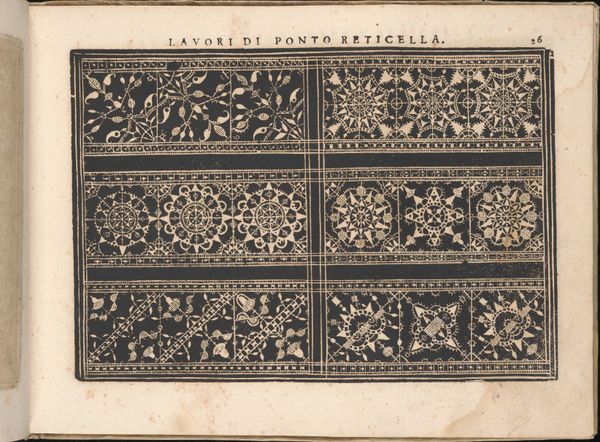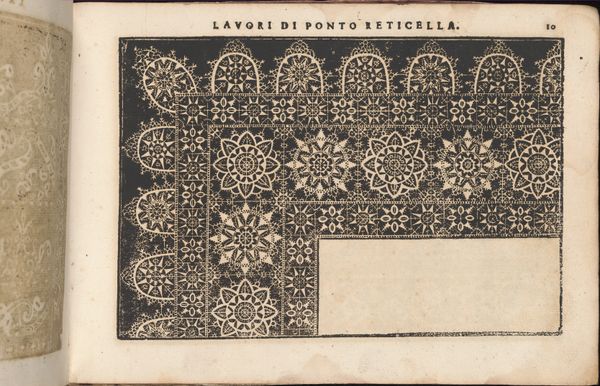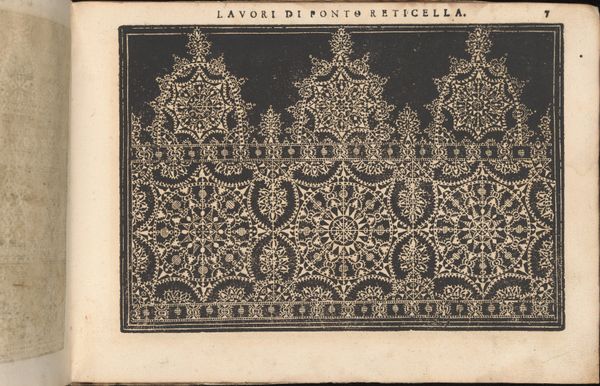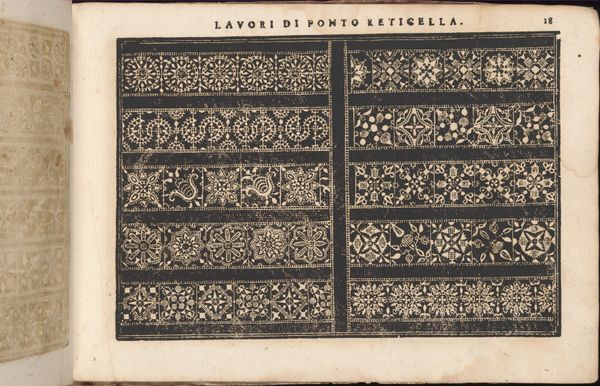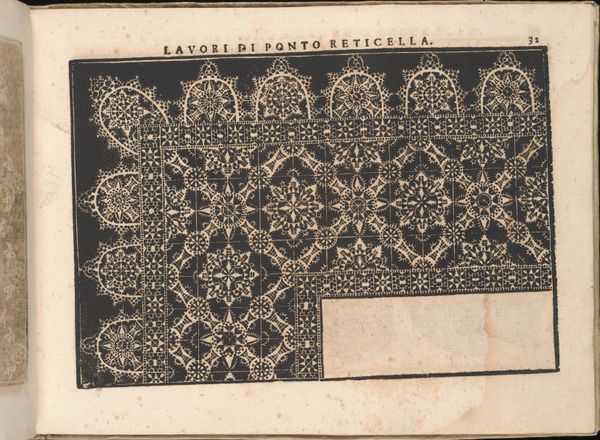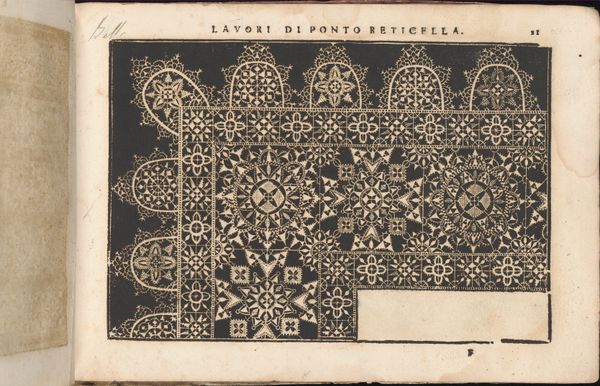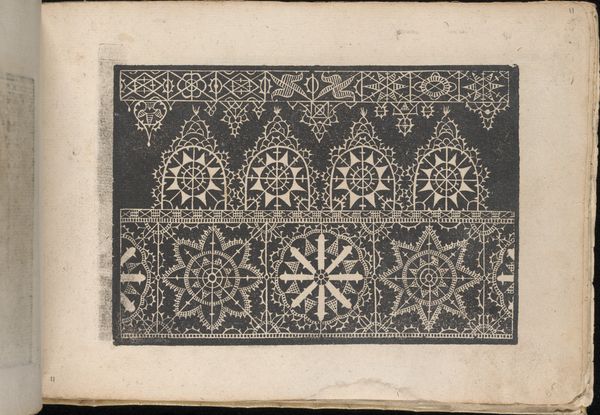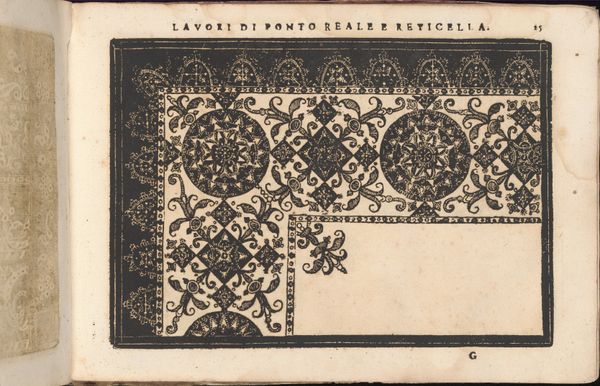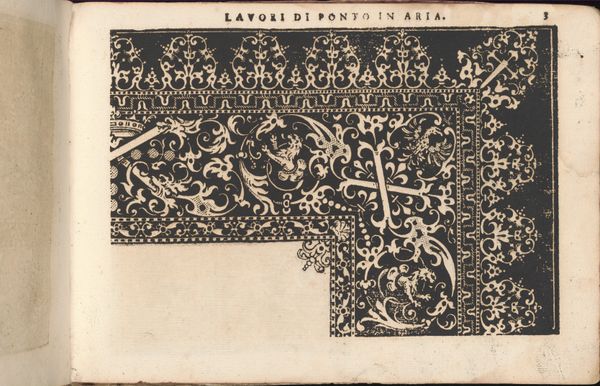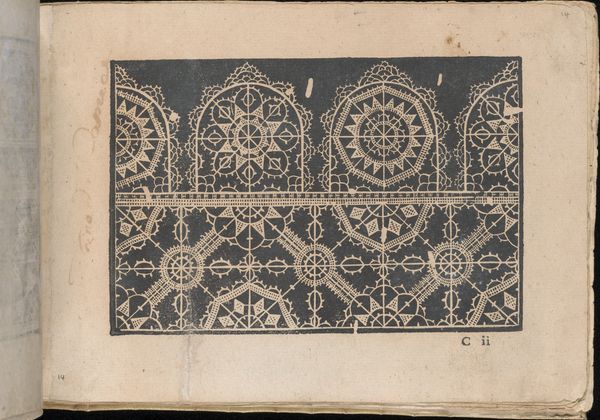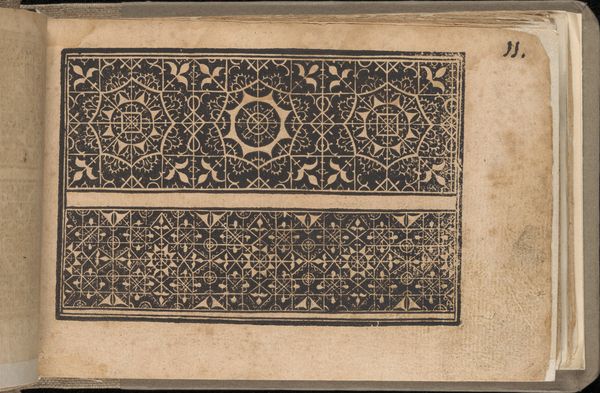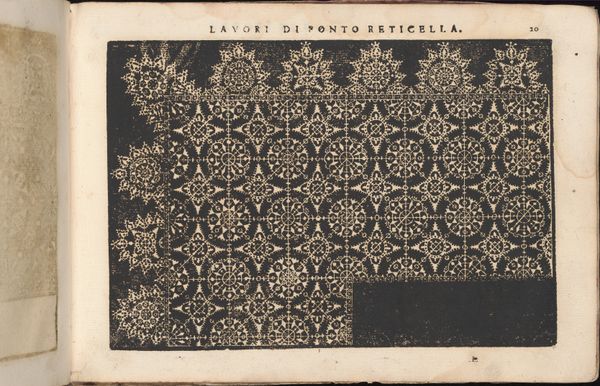
Teatro delle Nobili et Virtuose Donne..., page 28 (recto) 1616
0:00
0:00
drawing, graphic-art, print
#
drawing
#
graphic-art
# print
#
book
#
11_renaissance
#
geometric
#
line
Dimensions: Overall: 7 1/2 x 10 7/16 in. (19 x 26.5 cm)
Copyright: Public Domain
Editor: This page, number 28, comes from "Teatro delle Nobili et Virtuose Donne...", created in 1616 by Isabella Catanea Parasole. It's a print from a book, showing intricate geometric patterns. The density of the designs is incredible; what can you tell me about this piece? Curator: Considering this through a materialist lens, the print functions as a template, democratizing complex needlework. It highlights the process: from the designer creating the pattern, to the printmaker reproducing it, and ultimately to the needleworker who uses it. The image thus flattens traditional hierarchies separating 'high art' from craft. Think about the labor involved in each step of the production. Editor: So it's less about the finished lace and more about the instructions that enable its creation? Curator: Exactly! The book itself becomes a tool of production, distributing knowledge and skills. Each print facilitates potentially limitless repetitions and variations. This dismantles the idea of a unique, auratic art object in favor of mass production for personal use, reflecting early forms of accessible consumption. How does seeing it that way shift your understanding? Editor: I was initially drawn to the visual complexity of the pattern. But thinking about the book as a manual changes things. It connects the elite world of noble women to a wider sphere of skilled labor. The print served as a mediator. Curator: Precisely. And in doing so, it challenges our assumptions about who produces "art" and how that labor is valued, both then and now. The means of production becomes the message. Editor: I never thought about pattern books like this. It’s about access, labor, and redefining what we consider "art" based on its social function. Thanks! Curator: It demonstrates how analyzing materiality can reveal hidden aspects of social and economic exchange behind aesthetic objects.
Comments
No comments
Be the first to comment and join the conversation on the ultimate creative platform.
